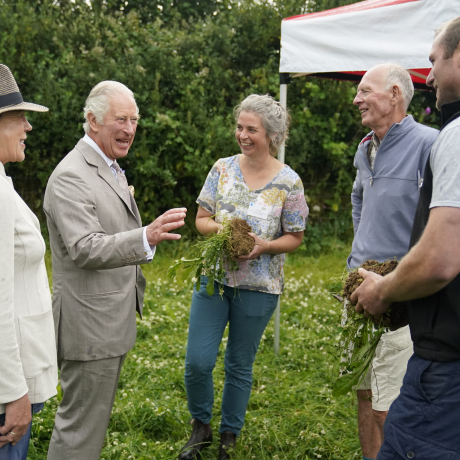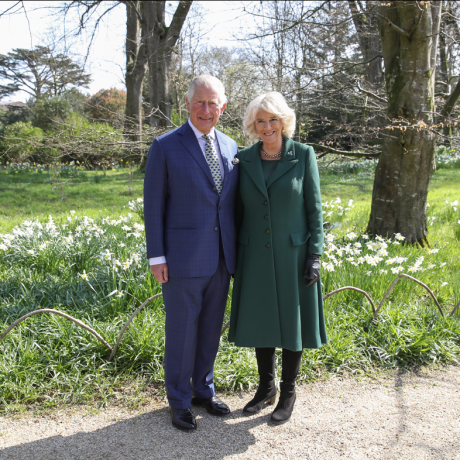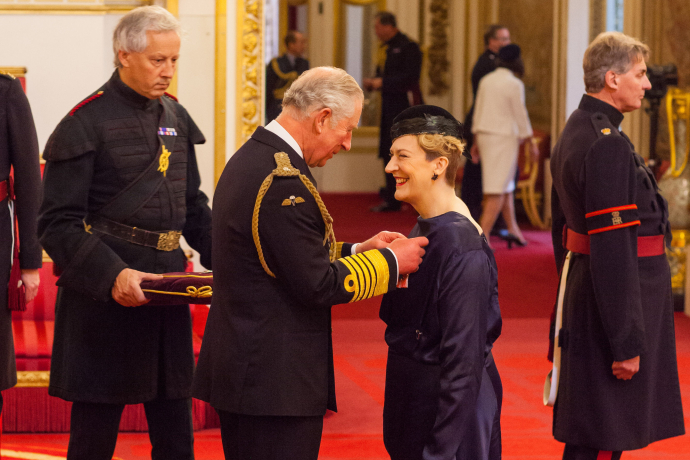A speech by HRH The Prince of Wales at the 150th anniversary of the Royal Institute of British Architects (RIBA), Royal Gala Evening at Hampton Court Palace
Published
To be concerned about the way people live; about the environment they inhabit and the kind of community that is created by that environment should surely be one of the prime requirements of a really good architect.
Ladies and gentlemen, it seems entirely appropriate in this anniversary year that the Royal Institute of British Architects should nominate Mr Charles Correa to The Queen to receive the Royal Gold Medal for Architecture. I have heard that he is a brilliant modern architect who has been responsible for splendidly brilliant and sensitive modern architecture, invariably of low cost. But it is his imaginative concern for those who suffer the disability of poverty in Bombay and the third world generally that he is justly famous. It is for this as well as his supreme skill as an architect that he is being honoured this evening.
It would seem that sesquicentenaries are coming thick and fast nowadays. Last year I was invited to become President of the British Medical Association for its 150th anniversary and greatly enjoyed holding that particular office. I am enormously relived, I must say, that you have not asked me to be President of the RIBA this year because while it is comparatively easy to be a practising hypochondriac it is probably much more difficult to become the architectural equivalent. On the other hand, my great, great, great grandfather, The Prince Consort, indulged himself wholeheartedly in a kind of architectural hypochondria as often as he could.
Osborne and Balmoral are, of course, the most obvious examples of his personal involvement with the design of buildings but he also busied himself with the design of farm buildings and the interiors of houses. No detail seemed to be too small to escape his attention and, as a result, we have been left with a series of buildings which never fail to fascinate and which display great individuality. (Although always inspired originally by some earlier style of architecture.) Embellishment appears to have been a vital ingredient, as far as Prince Albert was concerned, to any building and the more symbolic it was the better.
I sometimes can't help wondering whether planning permission would be forthcoming nowadays for some of his designs. But with the present, welcome reaction to the modern movement, which seems to be taking place in our society, it would be forthcoming. For at last people are beginning to see that it is possible, and important in human terms, to respect old buildings, street plans and traditional scales and at the same time not to feel guilty about a preference for facades, ornaments and soft materials. At last, after witnessing the wholesale destruction of Georgian and Victorian housing in most of our cities, people have begun to realise that it is possible to restore old buildings and, what is more, that there are architects willing to undertake such projects.
For far too long, it seems to me, some planners and architects have consistently ignored the feelings and wishes of the mass of ordinary people in this country. Perhaps, when you think about it, it is hardly surprising as architects tend to have been trained to design buildings from scratch - to tear down and rebuild. Except in Interior Design courses students are not taught to rehabilitate, nor do they ever meet the ultimate users of buildings in their training - indeed, they can often go through their whole career without doing so. Consequently a large number of us have developed a feeling that architects tend to design houses for the approval of fellow architects and critics, not for the tenants. The same feelings, by the way, have been shared by disabled people who consider that with a little extra thought, consultation and planning, their already difficult lives could be made that much less complicated. Having said that, I am told that the Department of the Environment is preparing an amendment to the Building Regulations which will mean that in future buildings will have to be designed so that they are accessible, which in turn will make it easier for architects who are working for clients. This is excellent news and could ultimately transform the lives of over two million people throughout the country.
I want to take this opportunity too, to express my gratitude to the President of the RIBA for his willingness to join with a group of architects, planners, government officials, journalists and disabled people who came to lunch with me in March to discuss this very problem. I would also like to say how impressed I am to see how the RIBA has overcome the difficulty of access to their HQ in London by means of an ingenious combination of steps and ramps. I know that many architects are now fully aware of the needs of disabled people and of their understandable desire to live as near "normal" a life as possible. Because of this increasing awareness on the part of architects and planners, I am sure that there will be considerable progress in the field. But there is a particular problem to overcome and that is the fire regulations which apply to all public buildings. Selwyn Goldsmith wrote about this in his 'Designing for the Disabled', which the RIBA helped initiate in 1961. Referring to building hazards to disabled people and the demands that exist for strict controls, he says: "For those who administer fire regulations the easy way out is always to say, 'yes, we must impose more controls because we are bothered about people dying'. The more difficult alternative is to say, 'no, we shall not, because we are concerned about people living'."
To be concerned about the way people live; about the environment they inhabit and the kind of community that is created by that environment should surely be one of the prime requirements of a really good architect. It has been most encouraging to see the development of Community Architecture as a natural reaction to the policy of decamping people to new towns and overspill estates where the extended family patterns of support were destroyed and the community life was lost. Now, moreover, we are seeing the gradual expansion of housing cooperatives, particularly in the inner city areas of Liverpool, where the tenants are able to work with an architect of their own who listens to their comments and their ideas and tries to design the kind of environment they want, rather than the kind which tends to be imposed upon them without any degree of choice.
This sort of development, spear-headed as it is by such individuals as a Vice-president of the RIBA, Rod Hackney and Ted Cullinan - a man after my own heart, as he believes strongly that the architect must produce something that is visually beautiful as well as socially useful - offers something very promising in terms of inner city renewal and urban housing, not to mention community garden design.
Enabling the client community to be involved in the detailed process of design rather than exclusively the local authority, is I am sure the kind of development we should be examining more closely. Apart from anything else, there is an assumption that if people have played a part in creating something they might conceivably treat it as their own possession and look after it, thus making an attempt at reducing the problem of vandalism. What I believe is important about community architecture is that it has shown 'ordinary' people that their views are worth having; that architects and planners do not necessarily have the monopoly of knowing best about taste, style and planning; that they need not be made to feel guilty or ignorant if their natural preference is for the more 'traditional' designs - for a small garden, for courtyards, arches and porches; and that there is a growing number of architects prepared to listen and to offer imaginative ideas.
On that note, I can't help thinking how much more worthwhile it would be if a community approach could have been used in the Mansion House Square project. It would be a tragedy if the character and skyline of our capital city were to be further ruined and St Paul's dwarfed by yet another giant glass stump, better suited to downtown Chicago than the City of London.
It is hard to imagine that London before the last war must have had one of the most beautiful skylines of any great city, if those who recall it are to be believed. Those who do, say that the affinity between buildings and the earth, in spite of the City's immense size, was so close and organic that the houses looked almost as though they had grown out of the earth and had not been imposed upon it - grown moreover, in such a way that as few trees as possible were thrust out of the way.
Those who knew it then and loved it, as so many British love Venice without concrete stumps and glass towers, and those who can imagine what it was like, must associate with the sentiments in one of Aldous Huxley's earliest and most successful novels, Antic Hay, where the main character, an unsuccessful architect, reveals a model of London as Christopher Wren wanted to rebuild it after the Great Fire, and describes how Wren was so obsessed with the opportunity the fire gave the city to rebuild itself into a greater and more glorious vision.
What, then, are we doing to our capital city now? What have we done to it since the bombing during the war? What are we shortly to do to one of its most famous areas - Trafalgar Square? Instead of designing an extension to the elegant facade of the National Gallery which complements it and continues the concept of columns and domes, it looks as if we may be presented with a kind of municipal fire station, complete with the sort of tower that contains the siren. I would understand better this type of high-tech approach if you demolished the whole of Trafalgar Square and started again with a single architect responsible for the entire layout, but what is proposed is like a monstrous carbuncle on the face of a much-loved and elegant friend.
Apart from anything else, it defeats me why anyone wishing to display the early Renaissance pictures belonging to the gallery should do so in a new gallery so manifestly at odds with the whole spirit of that age of astonishing proportion. Why can't we have those curves and arches that express feeling in design? What is wrong with them? Why has everything got to be vertical, straight, unbending, only at right angles - and functional?
As if the National Gallery extension wasn't enough they are now apparently planning to redevelop the large, oval-bellied 19th century building, known as the Grand Hotel, which stands on the south west corner of Trafalgar Square and which was saved from demolition in 1974 after a campaign to rescue it. As with the National Gallery, I believe the plan is to put this redevelopment out to competition, in which case we can only criticise the judges and not the architects, for I suspect there will be some entries representative of the present-day school of Romantic Pragmatism, which could at least provide an alternative.
Goethe once said "there is nothing more dreadful than imagination without taste". In this 150th anniversary year, which provides an opportunity for a fresh look at the path ahead and in which by now you are probably regretting having asked me to take part, may I express the earnest hope that the next 150 years will see a new harmony between imagination and taste and in the relationship between the architects and the people of this country.
Related content
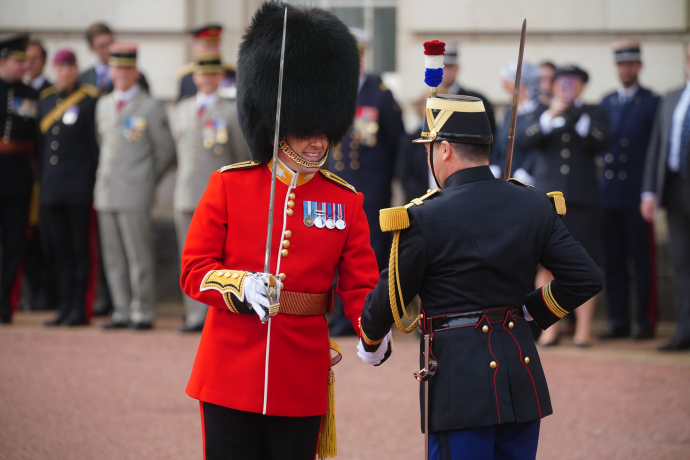
The King's support of the Arts

A message from The King on the 75th Anniversary on the Founding of N.A.T.O.
Message from The King for the 2024 Royal Maundy Service
It is my special prayer today that Our Lord’s example of serving one another might continue to inspire us and to strengthen all our communities.
Message from The King to mark the 70th anniversary of the end of the Korean War
It is our duty to remember what was once called “the Forgotten War”.
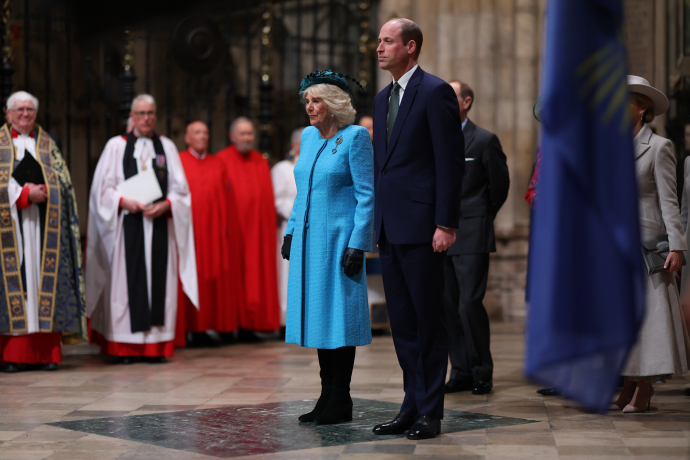
The King's Commonwealth Day Message 2024
The Commonwealth family is strongest when we are connected, through friendship.
A message of condolence from The King to the President of Tanzania following the passing of former Tanzanian President, Ali Hassan Mwinyi
My thoughts and prayers are with former President Mwinyi’s family and the Tanzanian people at this time.
Charities and Patronages

The King's message marking two years of conflict in Ukraine
My heart goes out to all those affected, as I remember them in my thoughts and prayers.

A message from His Majesty The King to Grenada marking their 50th year of Independence
On the occasion of the fiftieth Anniversary of the Independence of Grenada, it gives me great pleasure to send you all my congratulations and warmest good wishes.
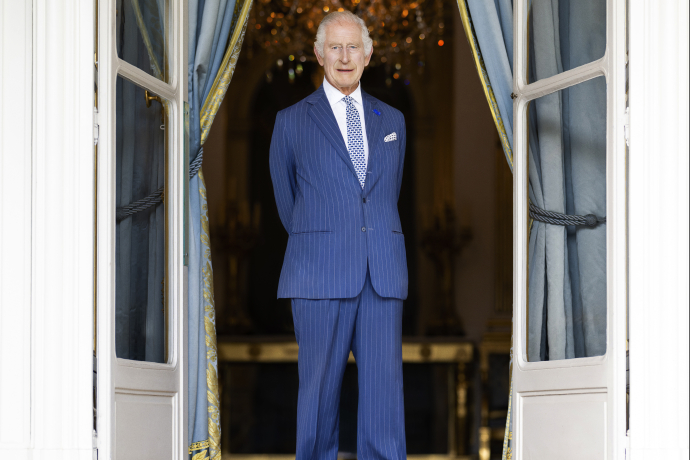
A message from His Majesty The King for the launch of Big Help Out 2024
I have long believed that one of the greatest strengths of our nation is our ability to come together and help each other through times of hardship. Throughout my life, I have...
A message from His Majesty The King to Their Majesties King Frederik X and Queen Mary of Denmark
I look forward to working with you on ensuring that the enduring bond between our countries, and our families, remains strong, and to working together with you on issues which...

The King and Faith
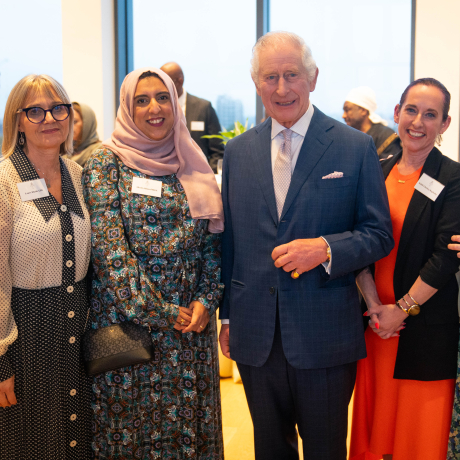
A speech by His Majesty The King at the opening of COP28, Dubai, U.A.E
Change will come by working together and making it easier to embrace decisions that will sustain our world, rather than carry on as though there are no limits – or as though...
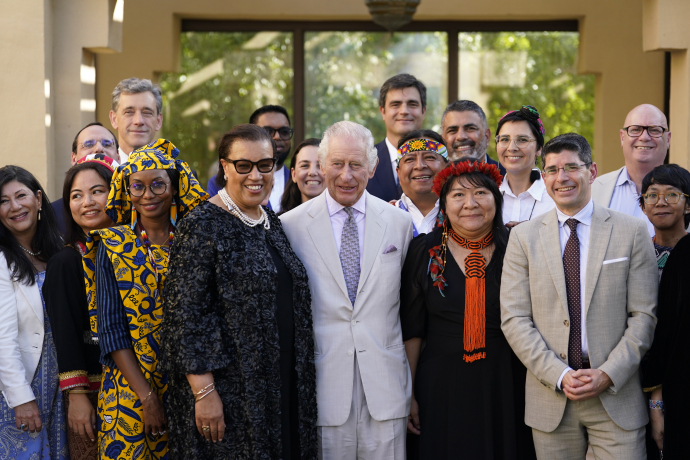

The King's speech at the State Banquet for the Republic of Korea
As our nations strive towards a harmony between progress and preservation, between the past and the present, we can look to the future with great confidence as our peoples...
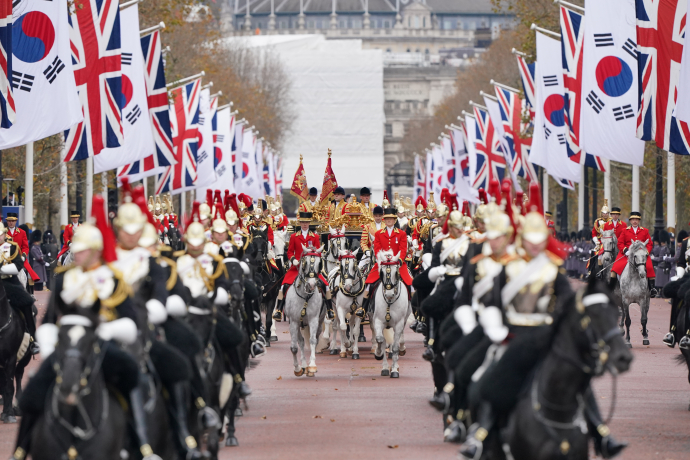
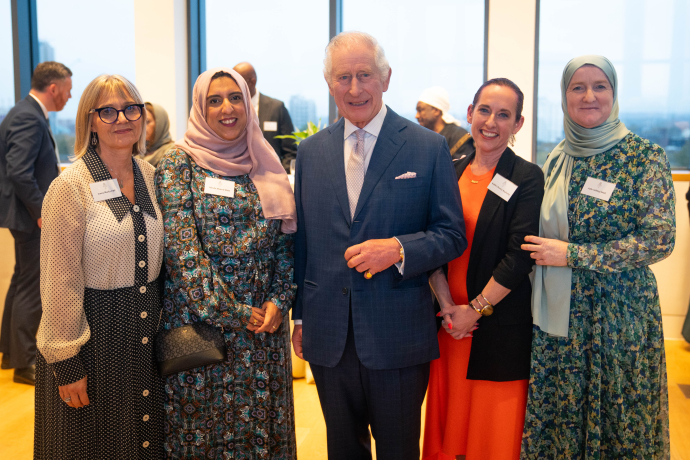
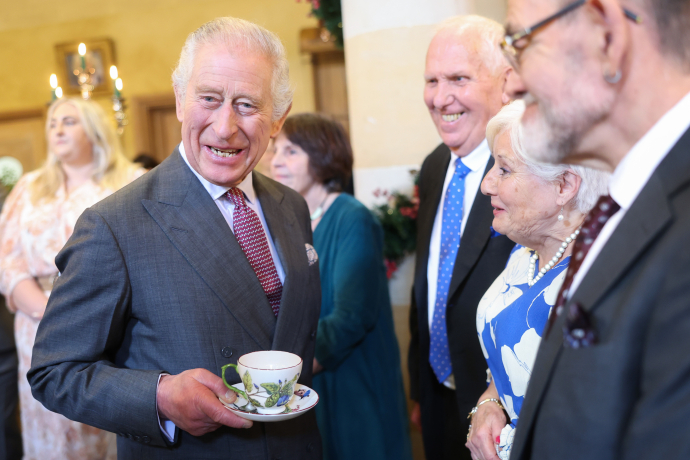
The Coronation Food Project

Charities founded by His Majesty The King as The Prince of Wales



Further information about the State Visit of the President of the Republic of Korea
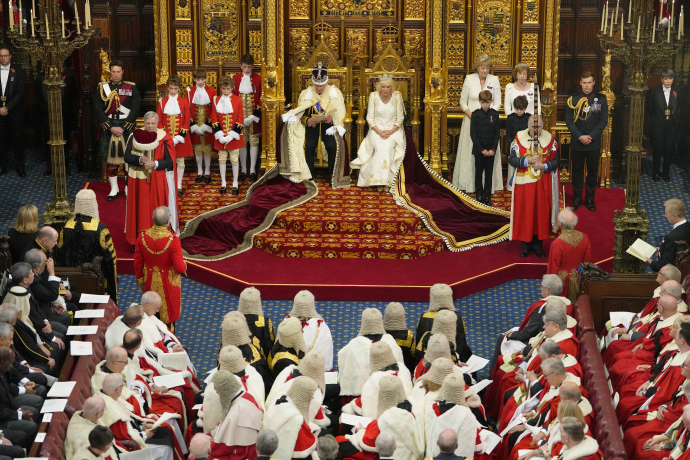
Remarks by His Majesty The King at the United Nations Office Nairobi, Kenya
As we look ahead to COP twenty-eight in another months time, we must remember what President Ruto said at the Africa Climate Summit – “we go far when we go together”.
A Speech by His Majesty The King at the State Banquet, Kenya
We both take considerable pride in renewing the ties between the United Kingdom and Kenya, a country that has long held such special meaning for my family.

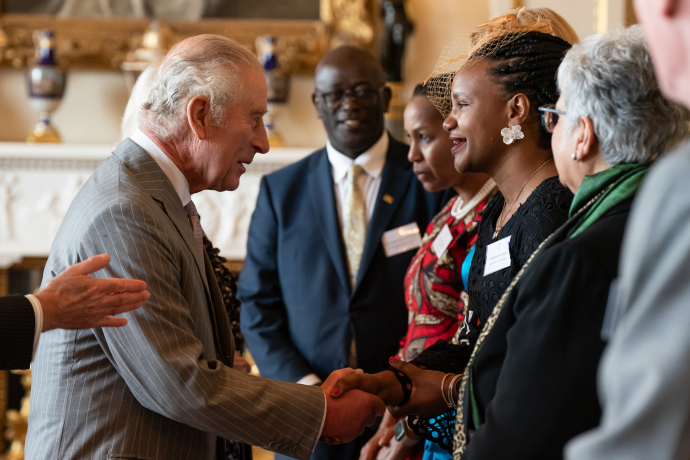
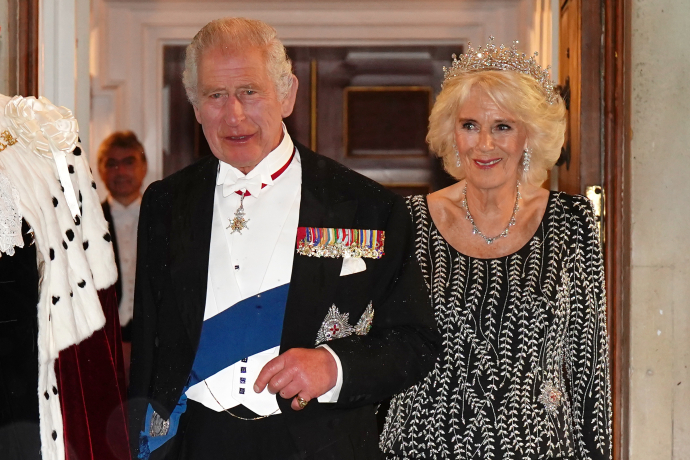
The King's speech at the French Senate
Today, in confronting the greatest challenges of our time, we continue the work of those who came before us. When General de Gaulle spoke to the French people from London in...


